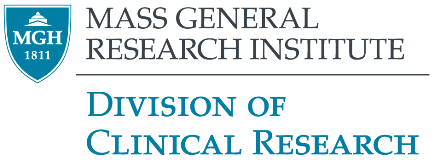Physiology of Human Brain Connectivity
Purpose
The purpose of this study is to investigate the effective connectivity between different regions of the human brain in healthy participants, and the mechanisms which influence and modulate its development. Specifically, the investigators will examine the effects of cortico-cortical paired associative stimulation (ccPAS) which is induced by the application of brief (< 1 ms) transcranial magnetic stimulation (TMS) pulses separated by a short millisecond-level time intervals ("asynchrony") to two different areas of the brain. All techniques are non-invasive and considered safe in humans: TMS, electroencephalography (EEG), and magnetic resonance imaging (MRI). Based on previous animal and human studies, it is hypothesized that ccPAS will increase or decrease effective connectivity between the stimulated areas depending on the asynchrony value. The main outcome measure is source-resolved EEG cortico-cortical evoked potentials (ccEPs) elicited by single-pulse TMS.
Condition
- Healthy
Eligibility
- Eligible Ages
- Between 18 Years and 64 Years
- Eligible Sex
- All
- Accepts Healthy Volunteers
- Yes
Inclusion Criteria
- Age from 18 to 64 years - Right-handed - Normal hearing and (corrected) vision - Able to understand and give informed consent
Exclusion Criteria
- Cardiac pacemaker or pacemaker wires; neurostimulators; implanted pumps - Metal in the body (e.g., rods, plates, screws, shrapnel, dentures that cannot be removed during the recordings, IUD) - Suspected metallic particles in the eye - Surgical clips in the head or previous neurosurgery - Any magnetic particles in the body - Cochlear implants - Prosthetic heart valves - Epilepsy or any other type of seizure history - Any neurological diagnoses or medications influencing brain function - History of significant head trauma (i.e., extended loss of consciousness, neurological sequelae) - Known structural brain lesion - Significant other disease (heart disease, malignant tumors, mental disorders) - Significant claustrophobia; Ménière's disease - Pregnancy (ruled out by urine ß-HCG if answers to screening questions suggest that pregnancy is possible), breast feeding - Non prescribed drug use - Failure to perform the behavioral tasks or neuropsychological evaluation tests - Prisoners
Study Design
- Phase
- N/A
- Study Type
- Interventional
- Allocation
- N/A
- Intervention Model
- Single Group Assignment
- Intervention Model Description
- PAS will be applied to two cortical targets at a minimum of 3 different asynchronies to modulate connectivity. PAS may selectively increase or decrease effective connectivity depending on the asynchrony. Negative asynchronies are expected to decrease effective connectivity, whereas positive asynchronies to increase it. All participants will be stimulated with all 3 asynchronies (on different visits).
- Primary Purpose
- Basic Science
- Masking
- None (Open Label)
- Masking Description
- Participants will not be informed of the asynchrony value for each visit. The order of asynchronies is randomized.
Arm Groups
| Arm | Description | Assigned Intervention |
|---|---|---|
|
Experimental Healthy Participants |
All participants will be scheduled for a minimum of four separate visits. The first visit will consist of MRI scanning sessions (including T1 and T2 structural MRI, diffusion MRI, and resting-state fMRI), followed by a single-pulse TMS session to determine the participant's resting motor threshold. The remaining three visits consist of a series of TMS-EEG runs using the paired associative stimulation (PAS) methodology. Each visit will be restricted to a single asynchrony condition with every participant receiving all three conditions over the course of the three visits. Participants will not be informed of which asynchrony condition they are receiving on any given visit. Some subjects may be invited for additional sessions for the purposes of optimizing TMS, EEG, or MRI parameters, and to assess test-retest reliability. |
|
Recruiting Locations
Boston 4930956, Massachusetts 6254926 02129
More Details
- Status
- Recruiting
- Sponsor
- Massachusetts General Hospital
Detailed Description
The purpose of this study is to determine the extent to which effective connectivity between different regions in the human brain can be selectively modulated by cortico-cortical paired associative stimulation (ccPAS) induced by transcranial magnetic stimulation (TMS). Study subjects will consist of healthy adults between the ages of 18 and 64 (N=80) . Participants will have TMS pulses applied to two brain regions, one in each hemisphere, where the two regions will be stimulated at a range of different temporal offsets ("asynchronies") characterized as being either shorter, longer, or approximately equal to the theorized inter-regional conduction delays, with absolute disparities between the asynchrony conditions on the order of milliseconds. Additionally, electroencephalography (EEG) will be concurrently measured to record cortico-cortical evoked potentials (ccEPs), which are the study's primary outcome measure. Asynchronies longer than the delay are hypothesized to increase effective connectivity and ccEP amplitudes, while shorter delays are expected to decrease them. This will be further supported by magnetic resonance imaging (MRI), functional MRI (fMRI), and diffusion MRI (dMRI) scans to provide structural and functional data to assist with ccPAS application. The initial study visit will consist of the MRI scans followed by a TMS session to record participant motor thresholds. The ccPAS TMS-EEG procedures will then be performed over the course of three additional visits, with each asynchrony condition conducted on its own separate visit and at least a week between them. Prior to ccPAS application, single-pulse TMS will be applied to one brain area to record ccEPs, in addition to resting-state EEG and a behavioral motor test. These will be repeated two additional times, once 5 minutes after ccPAS and again at 60 minutes after, to observe effect duration. All techniques and devices are non-invasive and considered safe within the parameters of the study, with overall participation carrying only non-significant risk.
